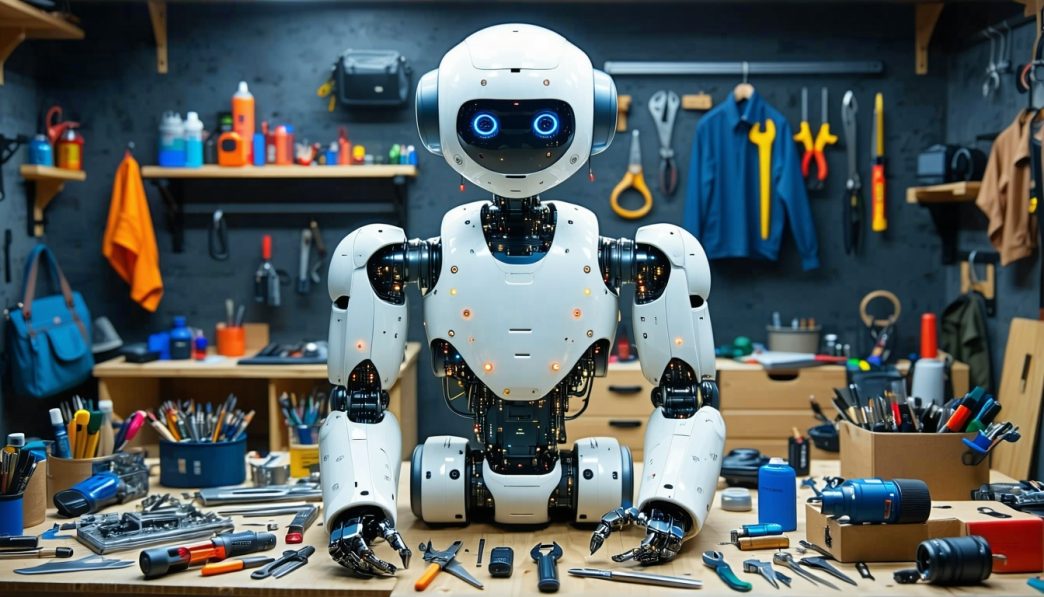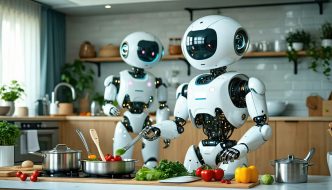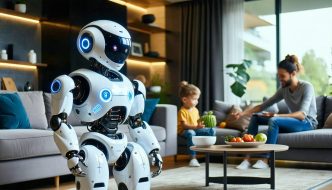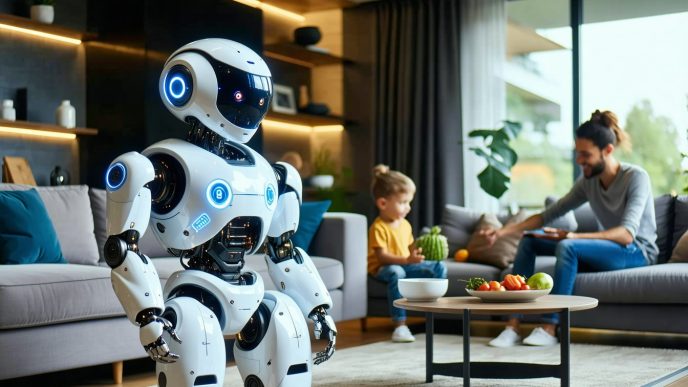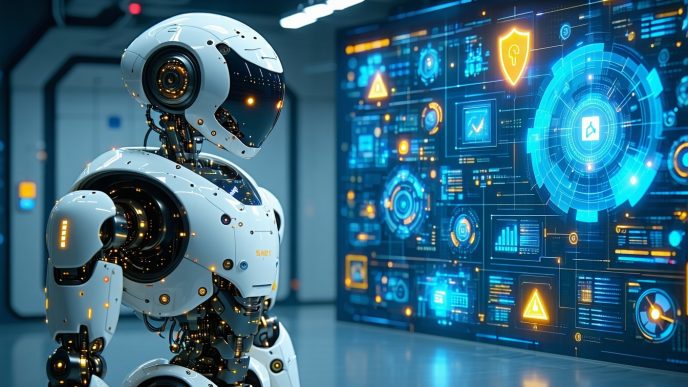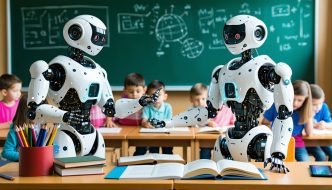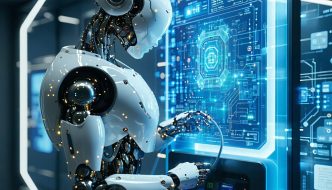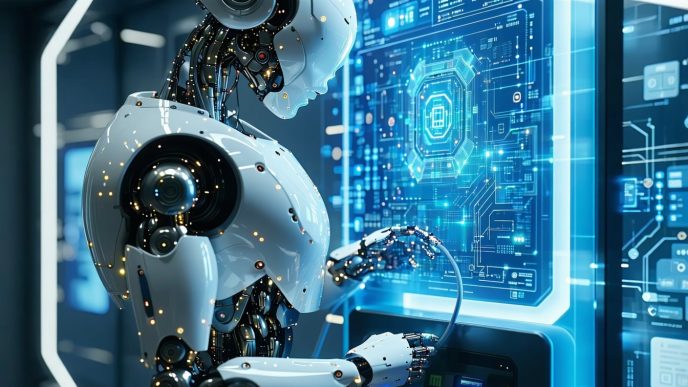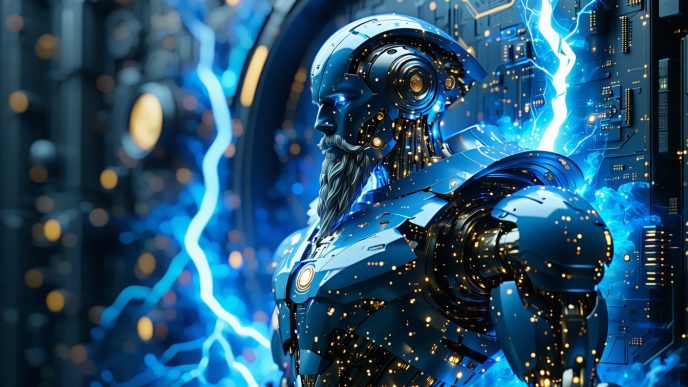The Future of Home Robots
Introduction to Humanoid Robots
Humanoid robots are machines designed to mimic human appearance and behavior. Their primary goal is to interact in a human-like manner, making them more relatable and accessible to users. As technology advances, these robots are increasingly being integrated into homes, functioning as companions, assistants, and even caregivers. The appeal of humanoid robots lies in their potential to enhance everyday life by providing support in various aspects, from household chores to companionship. For more information on their role in daily life, visit our article on humanoid robots for home use.
Evolution of Customization in Robots
Customization in robotics has significantly evolved over time. Initially, robots were rigid and programmed for specific tasks, lacking the ability to adapt to user preferences. However, advances in artificial intelligence and machine learning have paved the way for more versatile machines.
| Year | Development | Description |
|---|---|---|
| 2000 | Basic Functionality | Robots could perform a set of predefined tasks without adaptations. |
| 2010 | Introduction of AI | Early forms of artificial intelligence enabled robots to learn simple patterns and respond to basic commands. |
| 2020 | Advanced Customization | Robots began to incorporate user preferences, allowing personalization in functions and interactions. |
| 2025 | Future Prospects | Anticipated implementation of deep learning and advanced interfaces will allow for extensive customization options tailored to individual users. |
This evolution highlights the shift from static machines to dynamic systems capable of evolving based on user interaction and feedback. The potential for customization in humanoid robot functionalities enhances their usability in various contexts, such as home assistance or educational settings, indicating a strong future for humanoid robot customization.
As the technology progresses, the ability to tailor these robots becomes essential in meeting the diverse needs of users, leading to higher satisfaction and acceptance of robotic companions.
Understanding Humanoid Robot Customization
Definition of Customization in Robotics
Humanoid robot customization refers to the ability to modify the physical appearance, behavior, and functionality of robots designed to resemble humans. Customization can include changes to the robot’s design, features, and personality to better suit individual user preferences or specific tasks. This process often involves software and hardware adjustments that enable the robot to perform tailored functions or respond in personalized ways.
Benefits of Customizing Home Robots
The customization of home robots offers several key advantages:
| Benefit | Description |
|---|---|
| Enhanced User Experience | Personalized features allow owners to interact with their robots in a way that feels more natural and intuitive. |
| Increased Functionality | Tailoring functions to specific needs enables users to optimize their robots for various tasks, from daily chores to companionship. |
| Improved Engagement | Customization fosters a deeper emotional connection between users and robots, making interactions more meaningful. |
| Adaptability | Customized robots can adjust their behavior based on user feedback, improving their effectiveness over time. |
| Reflects Personal Preferences | Customizing aspects such as appearance and voice allows the robot to resonate more with individual tastes. |
Home robots that provide options for customization can address specific tasks, such as assisting the elderly or managing household chores, enabling more effective deployment in unique environments. For more insights on how humanoid robots can assist with daily tasks, refer to our article on humanoid robots for daily chores.
The potential for humanoid robot customization could revolutionize how society interacts with these machines, driving advancements in user satisfaction and overall utility. As technology progresses, the options for customization are expected to expand, creating even more personalized and effective household companions.
For further exploration into the various types and uses of humanoid robots, consider the advancements represented by Tesla’s Optimus Robot and Sanctuary AI’s Phoenix.
The Current State of Humanoid Robot Customization
As humanoid robots develop, their customization options have started to evolve. However, there are still notable limitations regarding humanoid robot customization that affect potential users.
Limitations in Current Customization Options
Despite advancements in technology, options for customizing humanoid robots remain constrained. Some of the primary limitations include:
- Limited Customization Features: Many robots offer only basic customization, such as selecting a few preset designs or altering minor functions. Advanced personalization is not widely available.
- Technical Constraints: The complexity of integrating various customization features can lead to technical challenges. Limited processing power and compatibility issues can restrict the customization options available to users.
- Cost Factors: Customizing a humanoid robot often involves additional costs, making it financially unfeasible for some potential owners. Advanced models with extensive customization options can be prohibitively expensive.
- User Knowledge: Effective customization often requires a certain level of technical knowledge or skill. Individuals lacking this expertise may struggle to utilize available options to their fullest potential.
Examples of Customization Features Available
While limitations exist, some features are currently available to users looking to customize their humanoid robots. Here are a few examples:
| Customization Feature | Description |
|---|---|
| Appearance Options | Users may be able to choose different colors, textures, or materials for the robot’s outer layer. |
| Voice Selection | Many humanoid robots allow users to choose from different voice profiles, enabling a more personalized interaction experience. |
| Functionality Settings | Users can adjust task-related functions or set priorities based on their specific needs, such as scheduling or performing daily chores. |
| Emotion Recognition | Some robots are integrated with emotion recognition features, allowing them to respond to human emotions differently based on user preferences. |
These basic customization options mark the starting point for more extensive developments in humanoid robot customization. Users interested in personalization of their humanoid robots can find additional insights into capabilities and trends in our article on humanoid robots for home use. Potential users should stay informed about future advancements in customization technology to make the most of their experiences with humanoid robots.
Challenges in Customizing Home Robots
As the interest in humanoid robot customization grows, several challenges must be addressed. These challenges can be broadly categorized into technical constraints and ethical considerations.
Technical Constraints
Technical limitations can impact the ability to customize humanoid robots effectively. Various factors contribute to these constraints, including hardware capabilities, software flexibility, and the complexity of the tasks the robots are designed to perform.
| Challenge | Description |
|---|---|
| Hardware Limitations | Current robots may not have the necessary hardware to support extensive customization options, such as interchangeable parts or advanced sensors. |
| Software Integration | Customization often requires more sophisticated software platforms. Many existing systems lack the flexibility for personalized programming or user-specific modifications. |
| Processing Power | Complex customizations may demand more computing power than current robots are equipped with, potentially leading to slower performance or glitches. |
These technical issues hinder the development of fully customizable humanoid robots that can meet the diverse needs of users. Exploring advancements in technology, such as robotic software platforms, could help overcome some of these challenges.
Ethical Considerations
As customization capabilities expand, ethical dilemmas become increasingly significant. Developers and users must navigate the implications of how robots are programmed and the effects of that programming on society.
| Ethical Concern | Description |
|---|---|
| Privacy | Customized robots may have access to personal data, raising concerns about how this information is stored and used. Ensuring that user privacy is protected is critical. |
| Bias in Programming | Customizing robots can inadvertently introduce bias in their responses or behaviors. Care must be taken to avoid reinforcing stereotypes or discriminatory practices through customization. |
| Misuse Potential | With increased customization comes a higher risk of misuse. Malicious actors may exploit personalized features for harmful purposes, necessitating strict ethical guidelines. |
Addressing these ethical considerations is vital for the responsible development of humanoid robots. Discussions surrounding robot emotions and ethics and privacy in robotics are essential for creating a framework that governs the safe and ethical use of customized robots.
Potential Customization Options in the Future
Humanoid robot customization is poised to undergo significant advancements in the coming years, allowing for more personalized experiences. This section will explore three main potential customization areas: personalization of appearance, tailoring functions to individual needs, and integrating artificial intelligence for enhanced interactions.
Personalization of Appearance
One of the key elements of humanoid robot customization is the ability to alter its appearance to better fit the user’s preferences. This could include changes to physical features such as skin tone, hair style, and even clothing options. Such personalization not only enhances the aesthetic appeal but also helps users form emotional connections with their robots.
| Appearance Aspect | Customization Options |
|---|---|
| Skin Tone | Various shades and textures |
| Hair Style | Different lengths, colors, and styles |
| Clothing | Selection of styles, colors, and patterns |
The option to choose these features can significantly impact user acceptance and emotional attachment. The enhanced user experience could lead to more prominent roles for these robots in home environments, as users may select designs that resonate with their personal tastes.
Tailoring Functions to Individual Needs
Beyond aesthetics, the ability to customize a humanoid robot’s functions is equally important. Users may have specific tasks they want their robots to perform, such as cleaning, cooking, or assisting with elderly care. Customizing these functions ensures that robots can meet the unique needs of different households.
| Function Type | Customizable Features |
|---|---|
| Household Chores | Custom schedule for cleaning tasks |
| Assistance | Programming for reminders and medication prompts |
| Social Interaction | Tailoring communication styles and topics of conversation |
By allowing users to define these functionalities, developers can create robots that serve a more significant role in daily life, providing assistance and companionship tailored to individual lifestyles.
Integrating Artificial Intelligence for Personalized Interactions
Integrating advanced artificial intelligence (AI) into humanoid robots presents opportunities for personalization beyond static features. AI can enable robots to learn and adapt to user preferences and behavior over time.
| AI Capability | Personalization Options |
|---|---|
| Voice Recognition | Customized responses based on user identification |
| Emotion Detection | Adaptive interaction styles based on social cues |
| Learning Algorithms | Tailoring tasks based on user feedback |
As AI technology evolves, so too will the potential for humanoid robots to engage in more meaningful interactions. Users may find that their robots can anticipate needs and adjust behaviors accordingly, enhancing overall functionality and user satisfaction.
The future of humanoid robot customization promises exciting possibilities. By focusing on personal appearance, tailored functions, and the use of AI, users can expect a more integrated and satisfying experience with their robots. For those interested in exploring the current landscape of humanoid robots, articles such as humanoid robots for home use provide valuable insights into existing models and capabilities.
Human-Robot Interaction
Importance of Human-Robot Interaction in Customization
Human-robot interaction plays a critical role in the effective customization of humanoid robots. The way users engage with their robots affects not only the functionalities they desire but also the overall user experience. Customization options can lead to a more personal and relevant relationship between humans and robots, fulfilling individual needs.
Understanding user preferences allows for tailoring features such as voice interfaces and physical appearances. This level of personalization makes robots more relatable and user-friendly. For example, consumers might want a specific voice or appearance that resonates with their lifestyle. Insight into user behavior can drive the development of innovative technologies that improve interaction quality.
| Feature | Impact on Customization |
|---|---|
| Voice Interfaces | Custom voice tones can enhance relatability. |
| Appearance | Personalized designs can create emotional connections. |
| Functionality | Tailored functions can respond to specific user needs. |
Building Trust and Engagement Through Customization
Customization can significantly contribute to building trust and engagement between users and their humanoid robots. When users feel that a robot understands their preferences and needs, they are more likely to engage positively with it. Trust is essential for the acceptance of robots in daily life, especially in sensitive areas such as healthcare or companionship.
Effective customization can improve functionality and enhance the user experience. For instance, robots capable of recognizing emotions through facial expressions or voice modulation can create a more connected experience. By integrating artificial intelligence, robots can adapt their interactions based on historical data, making them seem more intuitive and responsive.
| Benefit | Description |
|---|---|
| Enhanced Engagement | Users are more likely to interact with robots that feel personalized. |
| Increased Trust | Customization fosters a sense of reliability and safety. |
| Improved Accessibility | Tailored functionalities can assist individuals with specific needs. |
By focusing on human-robot interaction through customization, developers can create more effective, user-friendly humanoid robots that resonate deeply with users’ lifestyles. Engaging with customized features can lead to positive experiences that may elevate the role of these robots in everyday life. For further insights into humanoid robots, explore articles on humanoid robots for companionship and humanoid robots in healthcare.
Safe and Ethical Use of Customized Home Robots
The customization of home robots brings forth significant considerations regarding safety and ethics. As technology evolves, ensuring the responsible use of these devices is vital.
Ensuring Privacy and Security
Customized home robots often collect and store personal data to enhance their functionality. This data can include user preferences, daily schedules, and personal interactions. To protect users, manufacturers must implement robust security measures to prevent unauthorized access to this information.
| Privacy Considerations | Recommended Actions |
|---|---|
| Data Encryption | Employ advanced encryption techniques for stored data. |
| Access Control | Implement user authentication protocols to restrict access to sensitive information. |
| Regular Updates | Provide software updates to address vulnerabilities and improve security. |
Users should also be aware of their privacy settings and data-sharing preferences when using humanoid robot applications. Understanding what data is collected and how it is used can help ensure individuals feel secure with their robotic companions. For more insights on privacy, see our article on humanoid robots and privacy.
Ethical Guidelines in Customization
As humanoid robots become more integrated into daily life, establishing ethical guidelines for customization is essential. These guidelines should address various aspects, including user autonomy, the implications of customization choices, and the potential for unintended consequences.
- User Autonomy: Users should have the right to make informed decisions about the level of customization they wish to apply. Clear communication regarding the implications of these choices is necessary.
- Accessibility: Customization options should be inclusive, allowing individuals with different needs to benefit from the technology.
- Bias Mitigation: Algorithms used in customizations should be regularly reviewed to prevent the perpetuation of biases in interactions and services provided by the robots.
Incorporating these ethical principles into the development of customizable humanoid robots helps foster trust and promotes responsible innovation. To explore more on ethical considerations, check our article on robot emotions and ethics and learn how guidelines shape user experience in the evolving landscape of robotic technologies.

